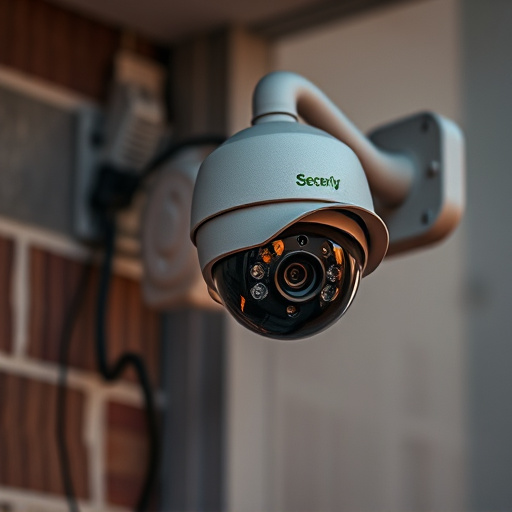Installing multiple fake security cameras strategically blends realistic simulations into environments to enhance security deterrence for homes and businesses by providing a persistent surveillance appearance while recording signals for later review, making it difficult for intruders to discern between genuine and dummy equipment.
Deterring crime and enhancing home security is now more accessible with fake security cameras. These realistic replicas offer numerous benefits, from deterring actual intruders to providing peace of mind for homeowners. This comprehensive guide explores how to maximize their effectiveness by installing multiple cameras strategically around your property. We’ll walk you through a step-by-step process and provide insights on creating a convincing simulated wiring system, ensuring a robust security network with the added allure of realism.
- Understanding Fake Security Camera Benefits
- Installing Multiple Cameras: A Step-by-Step Guide
- Creating a Realistic Simulated Wiring System
Understanding Fake Security Camera Benefits
Fake security cameras offer a unique and innovative approach to home or business security, providing multiple benefits that traditional surveillance systems may lack. One of the key advantages is their discreet nature; these fake cameras mimic real hardware convincingly, allowing them to blend seamlessly into any environment without raising suspicion. This is particularly useful for locations where an unseen presence is desired, such as high-value asset protection or monitoring sensitive areas.
Installing multiple fake security cameras can be a strategic move for enhancing overall security. By deploying these simulated devices at various points, potential intruders are presented with a false sense of being watched, deterring malicious activities. This tactic is especially effective in deterring petty crime and vandalism, as the mere presence of fake cameras could discourage would-be perpetrators from targeting the area.
Installing Multiple Cameras: A Step-by-Step Guide
Installing multiple fake security cameras involves a strategic approach for optimal coverage and deterrence. Start by identifying key areas to monitor, such as entrances, exits, and high-value assets. Purchase a set of identical fake cameras, ensuring they mimic real models with attention to detail in design and placement.
Next, plan the wiring route carefully. Simulated wiring should appear convincing, so use flexible, thin cables that can be hidden behind furniture or under carpeting. Connect each camera to a central hub or recording device using appropriate connectors. Position cameras at eye-level and ensure clear lines of sight. Test the system regularly to verify signal strength and image quality, making adjustments as needed for optimal performance and protection.
Creating a Realistic Simulated Wiring System
When setting up a network of multiple fake security cameras, creating a realistic simulated wiring system is key to enhancing the overall deception. This involves carefully planning and designing an intricate web of connections that mimic actual camera infrastructure. By installing phony cables and connectors, you can convincingly simulate the wiring of a fully operational surveillance system.
The process includes identifying strategic placement for fake cameras, running synthetic wires through walls or ceilings, and meticulously connecting them to simulated control boxes or recording devices. This level of detail not only increases the realism but also makes it more challenging for potential intruders to differentiate between genuine and dummy cameras.
Investing in multiple fake security cameras, complete with a realistic simulated wiring system, offers significant benefits for property owners. This cost-effective solution enhances home or business security without the need for extensive and costly installation processes. By following the simple step-by-step guide provided, you can easily install these cameras to create an effective deterrent, ensuring peace of mind and added protection.
